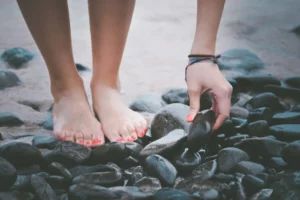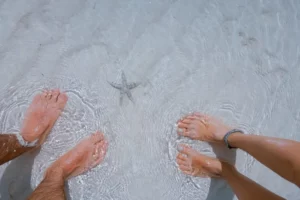With Christmas around the corner here are a few reminders when you are buying your next pair of cycling shoes. Cyclists’ cadence average about 90 revolutions per minute, rides can be short but often extend for a few hours. So there can be several thousand times that you push load through your pedals, feet and shoes during the course of a ride.
As such it is very important to have footwear that fits appropriately because even though numbness and tingling in your feet may be a common discussion over a brew (coffee) it is not ‘normal’.
When we are fitting shoes there are three elements that need to be considered; length, width and volume.
- Length
In walking and running shoes there is a goal to leave a thumb space in the front of the shoe. In cycling shoes this is NOT the case. Cycling does not allow the foot to fully lengthen like it does when we walk or run therefore we can fit into a shoe with slightly less room. I always recommend buying in store, shoe companies like to change things and you can never guarantee a fit online.
- Width
It is important to provide adequate width for the forefoot. Shoes that are too tight increase the risk of numbness and tingling as you compress the plantar nerves. Tight shoes also increase the risk of irritating any bony prominences like bunions. Modern shoes are becoming better at accommodating broad feet with super soft and stretchy uppers but it still remains that you may suit a wider shoe brand like Lake, Sidi or Shimano.
- Volume
The most common mistake is cyclists going up a size in their shoe to accommodate the width of their foot. This places their cleats in the wrong anatomical position as a longer shoe will mean you will be pedalling with more force going through your toes rather than metatarsal.
The one bike one brand mistake whereby we as cyclists love to stick to a particular brand of items. Just because you ride a specialised bike, wheels and helmet does not mean your foot will suit Specialised shoes. This is why most professional riders are allowed to choose whichever shoe they like. When riders are forced to wear sponsor shoes that don’t suit them it can end badly (very real story to this one).
“Choosing the correct footwear is the first step and will normally address most issues. After that a custom foot orthotic will usually be prescribed. I worked for Cobra9 carbon cycling orthotics in Australia for 2.5yrs manufacturing and troubleshooting their orthotics for Podiatrists across Australia. I am now consulting from Active Step Healthcare Ltd and riding around Hampshire every other day.” David Gruhl (BHlthSc), Musculoskeletal Podiatrist



